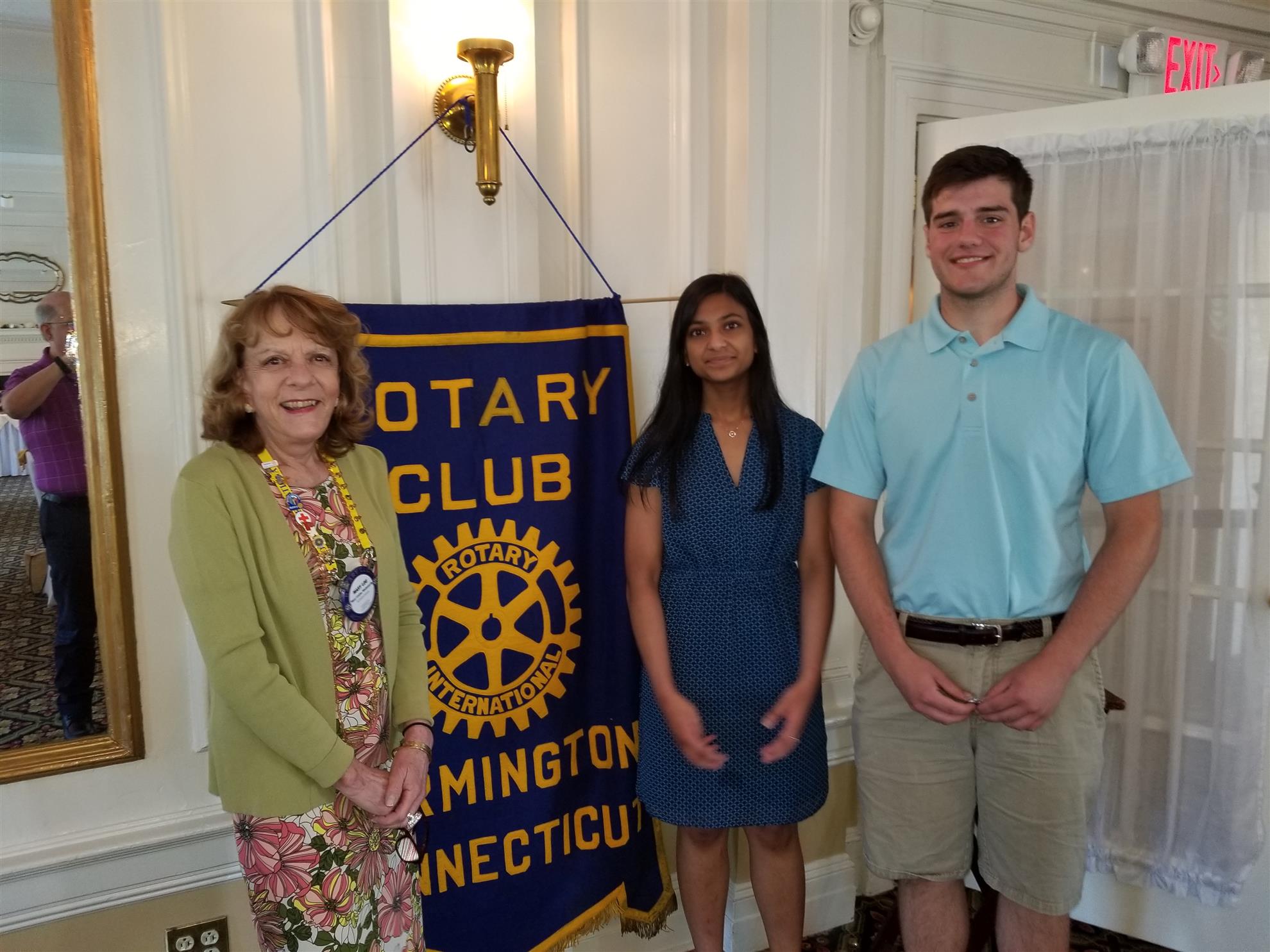
OUTGOING AND INCOMING INTERACT PRESIDENTS – Mary Lou Wadsworth, left, secretary of the Farmington Rotary Board of Directors, presented Rotary pins to Simrita Dhulekar, outgoing president of the Farmington High School (FHS) Interact Club that the Farmington Rotary supports; and Greg Lagosz, incoming FHS Interact president. Simrita is a FHS senior who also received one of two scholarships from the Farmington Rotary. She is planning on attending Boston University in the fall. Greg is currently a junior at FHS.
ATTENDANCE – There were 15 Farmington Rotarians in attendance, plus six guests – Don Bonner, outgoing president of the Avon-Canton Rotary; Simrita and Greg from Interact; Kayla Fusselman, the American honey queen and our speaker; and Ted and Becky Jones, Farmington beekeepers who are Kayla’s hosts while she is on speaking tour in Connecticut on behalf of the American Beekeeping Federation.
ANNIVERSARIES – Matt Vendetti and his wife, Leslie, celebrated their wedding anniversary a week ago.
RAFFLE – Incoming President Jenn Diederich had the winning ticket, but pulled the seven of clubs from the deck of playing cards instead of the ace of spades and therefore lost the pot.
HAPPY BUCKS – Donations were made in honor of our speaker; the Yankees being tied with the Red Sox in the Major League Baseball standings; Mike Cheshire Jr. being released from the hospital (he was injured in a car accident several weeks ago); the success of our Interact and RYLA programs; Mary Lou getting the approval of her physician to return to work; honey bees; and our incoming president (Jenn Diederich).
SPEAKER – Kayla Fusselman, 23, the “American Honey Queen” is a national spokesperson for the American Beekeeping Federation who is on a speaking tour, educating her audiences like the Farmington Rotary as well as school students and other organizations about the importance of honey bees to the pollination of many of the fruits and vegetables we eat.
Among the many facts about honey bees she told us, are:
- Every hive or bee community has a queen that is .8 inches big – the largest of all the bees.
- The queen lays up to 2,000 eggs per day.
- The lifespan of a queen is three years.
- When the other bees notice the queen is slowing down, laying fewer eggs, they kill her and replace her with another female bee that is bred specifically for this purpose.
- Each hive has between 50,000 – 80,000 bees.
- The drones are the male bees and are .6 inches long.
- The sole purpose of the drones is to mate with the queen.
- All the worker bees are female. They are .4 inches long.
- The worker bees are the bees that we see flying around from flower-to-flower, plant-to-plant.
- Worker bees have barbs on their stingers that stick into the person or animal they sting. When the bee flies away part of them stays, killing them. As a result they will only sting if provoked or in protection of their hive.
- The worker bees are the bees that are essential for pollination.
- They collect pollen from each plant and as they go to different plants they deposit some of the previous plant’s pollen, pollinating the species of plants.
- The workers fly a maximum of three miles from their hives, making up to 10 trips a day to retrieve pollen.
- The pollen is returned to the hive and converted to honey to feed the bee larvae growing in the honeycomb inside the hive.
- There are 300 varieties of honey in the United States and 3,000 worldwide.
- The varieties – flavors – are dependent on the crops the bees go to retrieve pollen.
- Many crops are 100 percent dependent on honey bee pollination.

